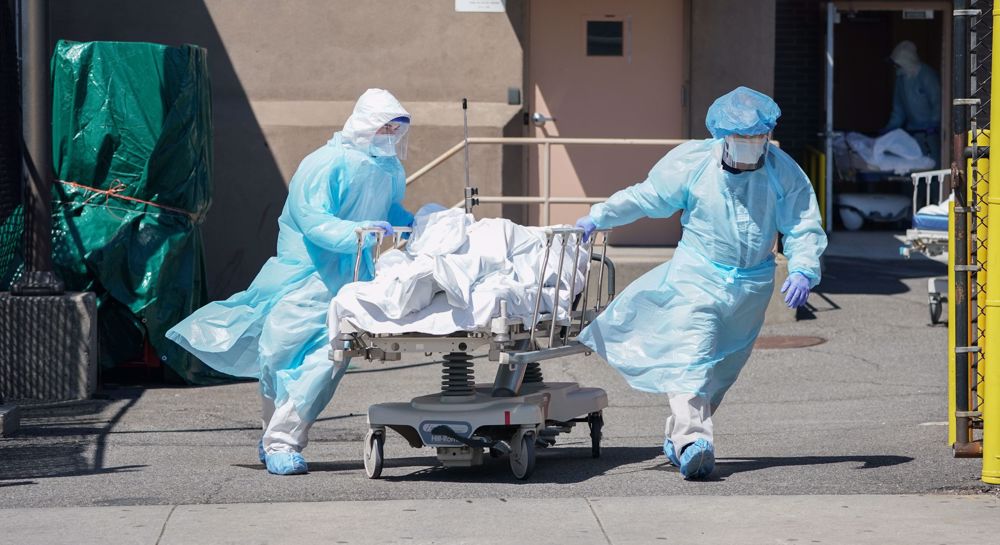US coronavirus deaths pass 100,000 as country reopens
More than 100,000 people in the US have now lost their lives to the new coronavirus less than four months after the contagion was first reported in the country.s
The US death toll reached a six figure number, 100,442, on Wednesday, according to data compiled by Johns Hopkins University, making almost one-third of the world’s fatalities, which has now surpassed 350,000.
On average, about 1,400 people have died each day in the country this month, according to the tally of state and county data.
The viral disease, COVID-19, has killed more Americans than during the US Korean War, Vietnam War and the US war in Iraq from 2003-2011 combined.
The new coronavirus also killed more people in the US than the AIDS epidemic did from 1981 through 1989, and it is far deadlier than the seasonal flu has been in decades.
Globally, the COVID-19 cases have now topped 5.6 million, with the US having reported over 1.7 million.
The first coronavirus infection was reported in the state of Washington in late January and the first known death happened in early February.
New cases of the viral infection have been on the rise in some southern US states in the past week, according to a Reuters tally.
Twenty US states, including North Carolina, Wisconsin and Arkansas, are among those seeing a steady rise in cases for the week ending on Sunday.
Some hard-hit states, however, are seeing a drop in death rates, including New York, where 21,000 people have so far died.
The grim milestone comes as almost all 50 states continue to reopen their frozen economy and emerge from more than two months of lockdowns under pressure from President Donald Trump, who is seeking reelection in November.
Trump claims that without his administration's actions, the death toll would be 25 times higher.
Trump’s claim came as a report said last week that thousands of lives could have been saved if his administration had implemented lockdowns and social distancing measures just two weeks earlier.
The vast majority of the virus deaths — about 54,000 — would have been avoided, if the US had begun locking down cities and limiting social contact on March 1, two weeks earlier than most people started self-quarantine, according to data from Columbia University disease modelers, which was first reported by The New York Times.
Maduro’s abduction: China says US cannot act as world’s ‘police’ or ‘judge’
VIDEO | Australians protest over US action in Venezuela
Cuba declares national mourning for 32 citizens killed in US raids on Venezuela
Iran: US must release kidnapped Venezuelan president
After US aggression against Venezuela, Mexico could be next: Report
Qalibaf: Protesters must be heard but foreign-linked agitators will be dealt with
VIDEO | German government refuses to condemn US aggression against Venezuela
Venezuela’s acting president calls for peaceful coexistence, dialogue with US











 This makes it easy to access the Press TV website
This makes it easy to access the Press TV website